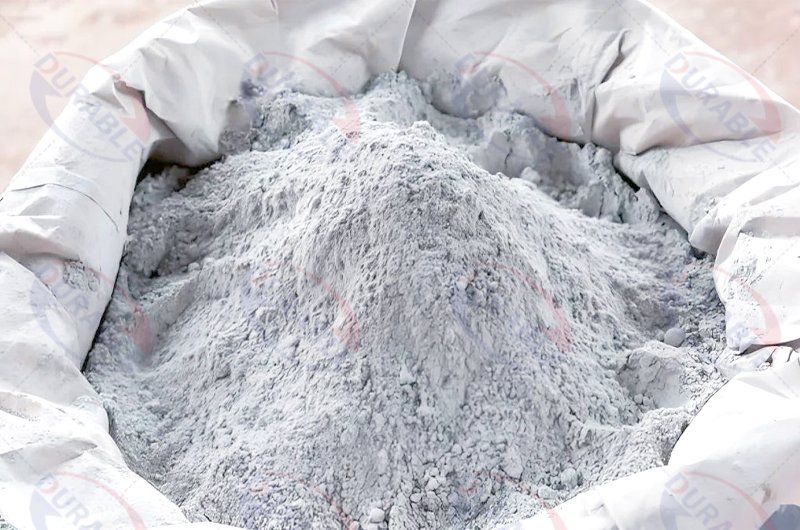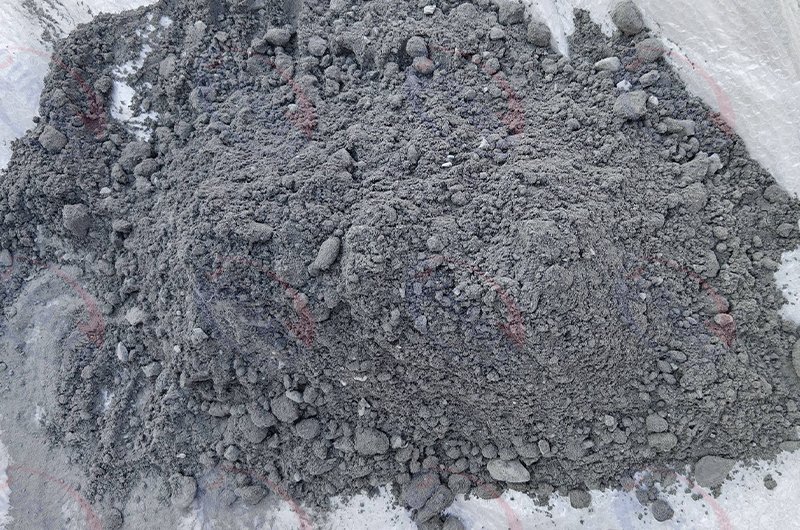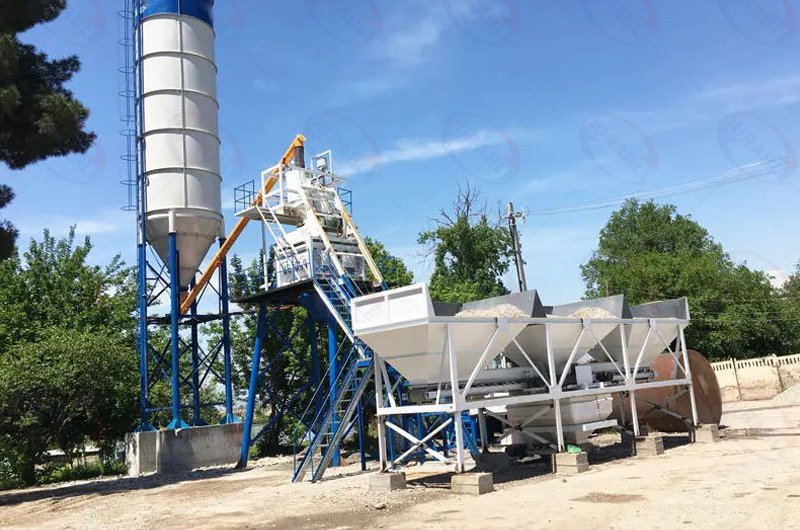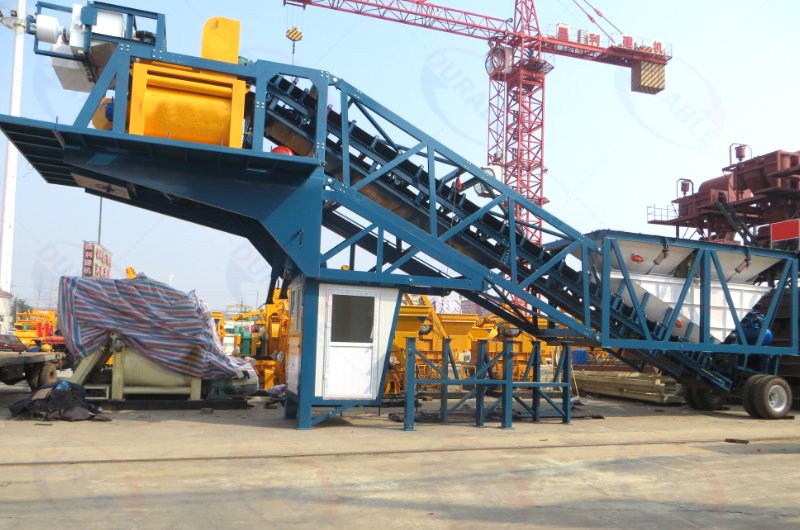Fly Ash – Properties, Source, Advantages, Uses
For decades, many saw fly ash as just a waste product from coal power plants—something to be disposed of. But in my 50 years in this industry, I have seen it transform into a strategic asset. Using fly ash correctly is one of the smartest business decisions a modern concrete producer can make. It’s not just about being “green”; it’s about making your concrete better and your business more profitable. This guide cuts through the noise and gives you the practical knowledge you need to leverage this secret weapon.


Table of Contents
- How Much Cement Cost Can You Save with Fly Ash?
- Beyond Savings, How Does Fly Ash Improve Your Concrete?
- Class F vs. Class C Fly Ash: Why Choosing Wrong is a Disaster
- How to Ensure Your Fly Ash Source is Reliable?
- Upgrading Your Plant: Storing and Handling Fly Ash
- How to Manage the Risks of Using Fly Ash?
- In the Green Building Era, Fly Ash is Your Competitive Edge
- Common Questions Answered
- Summary and Recommendations
How Much Cement Cost Can You Save with Fly Ash?
Let’s get straight to the point: the primary driver for using fly ash is cost reduction. Portland cement is almost always the most expensive component in a concrete mix. Fly ash, being a recycled industrial byproduct, is significantly cheaper. By replacing a portion of your cement with fly ash, you directly lower the cost of every cubic meter of concrete you produce.
The calculation is simple. Let’s assume:
- Price of Portland Cement: $120 per ton
- Price of Fly Ash: $40 per ton
- A typical concrete mix uses 350 kg of cement per cubic meter.
If you implement a 25% cement replacement with fly ash, you are swapping out 87.5 kg of expensive cement for cheaper fly ash. - Cost Savings per Cubic Meter: (87.5 kg Cement Cost) – (87.5 kg Fly Ash Cost)
- (0.0875 tons * $120) – (0.0875 tons * $40) = $10.50 – $3.50 = $7.00 saved per cubic meter.
For a plant producing 200 cubic meters per day, that’s a saving of $1,400 per day. Over a year, this adds up to hundreds of thousands of dollars straight to your bottom line. The exact numbers will vary by region, but the principle of significant savings remains constant.
Beyond Savings, How Does Fly Ash Improve Your Concrete?
While cost is the hook, the performance benefits are what make fly ash concrete a superior product. This is due to its unique physical and chemical properties. Physically, fly ash particles are microscopic, spherical “ball bearings,” unlike the jagged shape of cement particles. Chemically, it’s a pozzolan, meaning it reacts with the weak byproducts of cement hydration to form more strength-giving glue.
How This Helps Your Operations and Your Customers
Better Workability & Pumpability: The “ball bearing effect” makes fresh concrete flow more smoothly. This means it’s easier to pump, place, and finish, saving your crew time and reducing wear on your pumps and mixers.
- Reduced Permeability: The pozzolanic reaction fills in the microscopic pores within the concrete. This creates a much denser, less permeable material that is more resistant to water, chlorides, and other harmful chemicals.
- Increased Durability: By making the concrete denser and more resistant to chemical attack (like sulfates), you produce a product with a significantly longer service life. This is a huge selling point for projects like bridges, foundations, and marine structures.
- Lower Heat of Hydration: In large concrete pours, the heat from cement hydration can cause thermal cracking. Replacing cement with fly ash slows this reaction, reducing the peak temperature and protecting the structural integrity.
Class F vs. Class C Fly Ash: Why Choosing Wrong is a Disaster
This is the most critical technical point you must understand. Not all fly ash is the same. The type of coal burned determines its class, and using the wrong class for your application can lead to project failure. The two main types are defined by ASTM C618.
Key Differences Between Class F and Class C
| Feature | Class F Fly Ash | Class C Fly Ash | What This Means For You |
|---|---|---|---|
| Source Coal | Anthracite / Bituminous (Hard Coal) | Lignite / Sub-bituminous (Soft Coal) | Your supplier must know the source power plant. |
| Calcium Content | Low (<10%) | High (15-35%) | This is the key chemical difference. |
| Main Property | Purely Pozzolanic | Pozzolanic AND Cementitious | Class C has some self-hardening ability. |
| Best For | High-performance, high-durability concrete. Excellent sulfate resistance. | General purpose use, soil stabilization. Contributes to early strength. | Use Class F for demanding projects. Use Class C where early strength is needed and chemical attack is not a concern. |
| Sulfate Resistance | High | Low to Moderate | Never use Class C in environments with high sulfate exposure (e.g., certain soils, industrial wastewater). |
How to Ensure Your Fly Ash Source is Reliable?
A consistent, high-quality fly ash source is crucial for producing predictable concrete. An unreliable source can wreak havoc on your mix designs and quality control.
- Partner with Reputable Suppliers: Work with suppliers who source from large, consistently operating power plants. A plant that frequently changes its coal source will produce inconsistent fly ash.
- Demand Mill Test Reports: A professional supplier will provide a recent chemical and physical analysis report for each batch or silo they deliver. This is your proof of quality.
- Perform Your Own Testing: For critical projects, you should regularly test incoming fly ash for fineness, moisture content, and loss on ignition (LOI) to ensure it meets your standards.
Upgrading Your Plant: Storing and Handling Fly Ash
You cannot simply dump fly ash into your cement silo. As a fine powder, it requires dedicated equipment to prevent contamination and ensure accurate batching.
A modern Concrete Batching Plant is designed with this in mind. The key additions your plant will need are:


- Dedicated Fly Ash Silo: A separate, weather-proof silo is essential. It must be equipped with a dust collector to manage air displacement during pneumatic loading.
- Conveying System: A screw conveyor is typically used to move the fly ash from the bottom of the silo to the weigh hopper.
- Separate Weigh Hopper: The fly ash must be weighed accurately in its own hopper, separate from the cement, before being discharged into the mixer.
Investing in the right storage and batching equipment is not an option; it’s a requirement for producing quality-controlled fly ash concrete.
How to Manage the Risks of Using Fly Ash?
Like any technical material, fly ash has potential downsides if not managed correctly. An experienced producer knows how to mitigate them.
- The Challenge: Slower Setting Time: The pozzolanic reaction is slower than cement hydration, which can delay finishing operations.
◦ The Solution: Use accelerating admixtures, or use a blend with a small percentage of Class C fly ash if appropriate for the project. Proper planning for finishing crews is also key. - The Challenge: Lower Early Strength: Fly ash concrete typically has lower strength at 1, 3, and sometimes 7 days.
◦ The Solution: Adjust your mix design. A well-designed fly ash mix will meet the specified strength at 28 days and exceed it significantly in the long term. Ensure proper curing conditions (temperature and moisture) are maintained, as this is critical for the pozzolanic reaction.
In the Green Building Era, Fly Ash is Your Competitive Edge
Today, sustainability is a powerful market driver. Using fly ash allows you to position your company as a forward-thinking, environmentally responsible leader.

- Meet Green Building Standards: Using fly ash concrete can contribute valuable points toward certifications like LEED (Leadership in Energy and Environmental Design).
- Win Government & Corporate Contracts: Many public and large corporate projects now have mandatory requirements for using recycled materials and reducing the carbon footprint. Your ability to supply high-quality fly ash concrete can be a deciding factor in winning these bids.
- Enhance Your Brand: Marketing your use of sustainable building materials demonstrates a commitment to quality and environmental stewardship, which can attract premium clients.
Common Questions Answered
Question 1: Can I replace 100% of cement with fly ash?
A: No. Fly ash requires the calcium hydroxide from the initial cement hydration to activate its pozzolanic properties. Without cement, there is no reaction. Typical replacement levels are 15-35%.
Question 2: Does fly ash change the color of the concrete?
A: Yes. Fly ash typically darkens the concrete, resulting in a richer, dark gray color compared to the lighter gray of a 100% Portland cement mix. This is often seen as an aesthetic benefit.
Question 3: What is the most important property to check in a fly ash test report?
A: Two are critical: the chemical composition (to verify if it’s Class F or C) and the Loss on Ignition (LOI). A high LOI indicates unburned carbon, which can interfere with air-entraining admixtures and hurt durability. An LOI below 3% is excellent.
Summary and Recommendations
Using fly ash in concrete is a clear win-win. It directly lowers your production costs by replacing expensive cement, and it creates a superior product that is more workable, more durable, and has a longer lifespan. The key to success is understanding the critical difference between Class F and Class C, securing a reliable source, and equipping your plant to handle it properly. By embracing this technology, you are not just saving money; you are building a more resilient and sustainable business.
 Durable Machinery
Durable Machinery